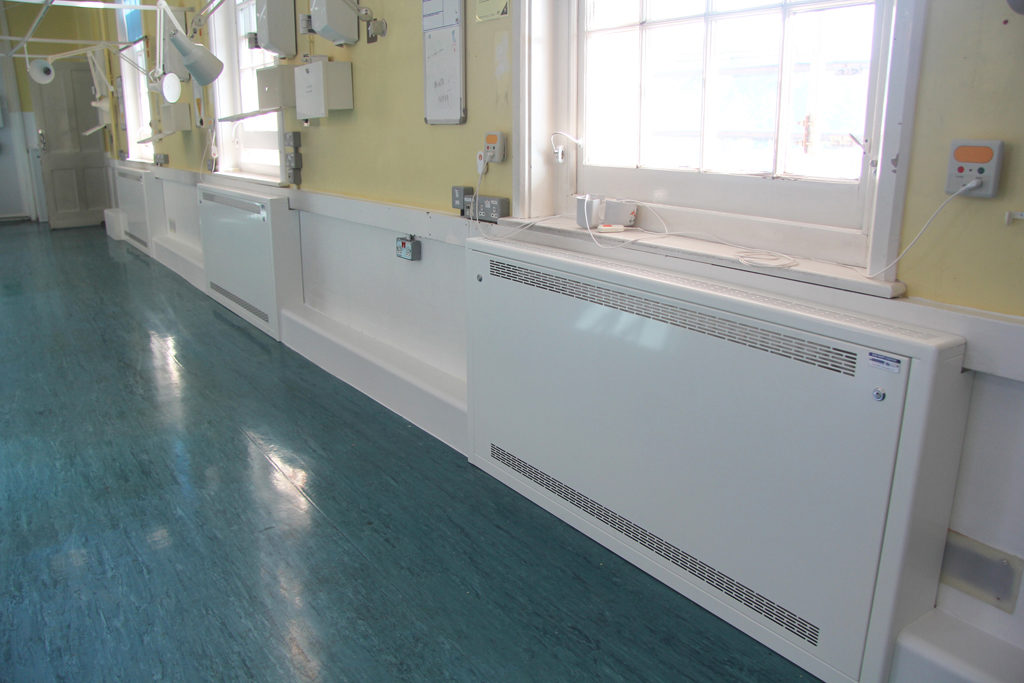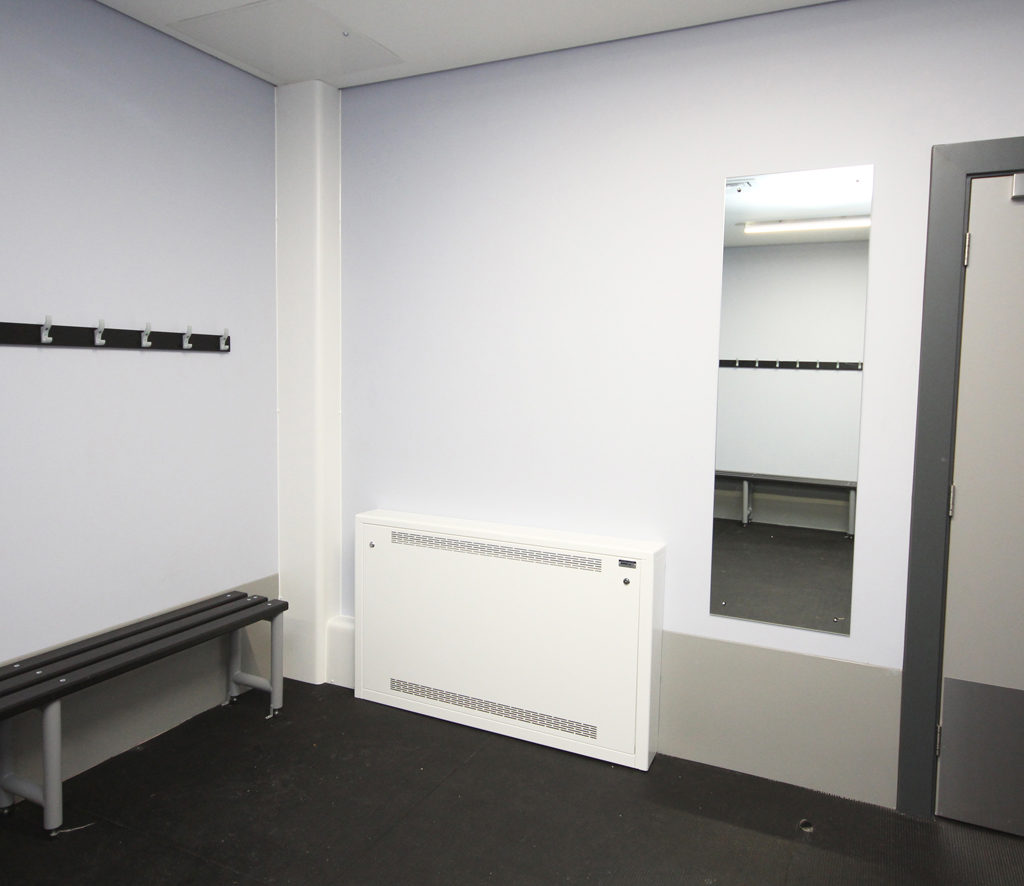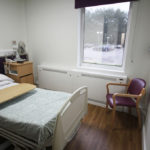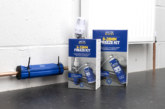Radiators fitted in public sector buildings can be operating at temperatures that pose a burn risk, which is a particular concern if the people using the facilities are children or vulnerable adults. It is therefore essential for the managers of schools, hospitals, care homes and leisure facilities to control the risks – and low surface temperature (LST) radiator guards can provide a solution, as Richard Braid from Pendock explains.
While low temperature heating systems are becoming more common, especially because they are more energy-efficient, many of the central heating radiators currently installed in UK buildings are operating at high temperatures of around 60 to 80°C, posing a burn risk. According to the Health & Safety Executive (HSE), contact with surfaces above 43°C can lead to serious injury. In fact, between 1st April 2017 and 31st March 2018, there were 962 hospital admissions* in England due to unintentional injury by contact with hot heating appliances, radiators and pipes.
(*Finished Consultant Episodes: a period of care for a patient under a single consultant at a single hospital. The data is based on the number of episodes of care for admitted patients rather than the number of patients.)
Some people are more vulnerable to the risks of burns, including children, the elderly, people with reduced mental capacity, mobility or temperature sensitivity and people who cannot react appropriately, or quickly enough, to prevent injury. Indeed, out of the hospital admissions mentioned above, 307 involved children (aged 16 and under) and 428 involved people over 65*. Furthermore, the Royal Society for the Prevention of Accidents (RoSPA) says contact burns to those over 65 can prove fatal, and the main sources of heat include radiators.
Radiator injuries can of course occur in the home, but radiators fitted in public sector buildings pose a significant risk too, especially if vulnerable people are using the facilities. The risks need to be managed in schools and leisure facilities, but also in hospitals and care homes, especially as in these environments water temperatures are circulated above 50°C to control Legionella.

HSE guidance
An HSE information sheet on hot water and surfaces in health and social care1 suggests incidents often happen in areas where there are low levels of supervision, for example in bedrooms, bathrooms and some communal areas, and that prolonged contact often occurs because people have fallen and are unable to move, or are trapped by furniture. Where an assessment has identified that vulnerable people may come into prolonged contact with hot surfaces, the guidance is for the equipment to be designed or covered so that the maximum accessible surface temperature does not exceed 43°C.
Low surface temperature (LST) radiator guards, which fit neatly over existing radiators (with pre-formed skirting cut outs and valve access panels making installations quicker and easier), can help to protect vulnerable people.
When guaranteed temperature control is required (where, for example, surface temperatures must not exceed 43°C), a baffle can be fitted below the radiator grille, enabling compliance. Pendock guards with this feature have been tested and approved by the Building Services Research and Information Association (BSRIA).
Removing hazards
In addition to the risk of burns from hot surface temperatures, radiators pose other hazards, which can also be addressed through fitting radiator guards.
The main one to be aware of is that a radiator can be a ligature point, as a cord or rope could be attached for the purpose of hanging and strangulation. While it’s important to assess the risks in all public sector environments, it is a significant concern for mental health facilities. According to research, three-quarters of people who kill themselves while on a psychiatric ward do so by hanging or strangulation, and in 2012, the cross-Government strategy for preventing suicide in England called on mental health services to make ‘regular assessments of ward areas to identify and remove potential risks i.e. ligatures and ligature points’.

Outside the mental health sector, there are no specific requirements for the management of ligature risks in hospitals. However, according to the Care Quality Commission (CQC) guide on ligature points4, other services that may deal with mentally disordered patients (such as A&E departments) should be aware of the risks and have management plans to meet them.
When radiators in healthcare environments are covered with LST guards, it’s important to ensure there are not any gaps that hands could get through and that access to any ligature points is eliminated. All Pendock radiator guards can be fitted with a welded anti-ligature mesh, which sits behind the radiator grille, removing ligature points.
Additional safety measures
Radiators with sharp edges also present a hazard for anyone who could accidently fall on to them, and provide the potential for self-harm. In fact, many of the accidents associated with radiators involve falls, trips and impacts. For example, it’s estimated that in 2002, 19,495 A&E attendances involved a fall onto a radiator or hot pipe. Radiator guards with radiused ‘bullnose’ corners have therefore been developed to provide an extra level of safety.
When selecting radiator guards, building managers should pay close attention to the quality of the material they are manufactured from; products at the budget end of the market can potentially be more susceptible to damage, and might be difficult to clean – leading to a build-up of dirt and bacteria.
In addition, there should not be any surface hot spots, the efficiency of the radiator should not be adversely affected, and regular maintenance needs to be allowed for. An antibacterial coating to kill MRSA, Salmonella, E. coli and C. difficile is included as standard on all our radiator guards, and products can be supplied with a drop-down lockable panel for routine cleaning, inspection and maintenance.
Burns from radiators can be a risk in many public sector buildings — but the installation of LST radiator guards can help to protect vulnerable people by ensuring a safe surface temperature. Radiator guards also help to remove ligature points, and can reduce the impact of a fall against a radiator.

Case studies
At Whipps Cross University Hospital in London, 250 LST radiator guards were installed, along with around 300 meters of pipe boxing to cover exposed pipework. The trust had carried out a mock Care Quality Commission (CQC) audit, which highlighted that a number of uncovered and very hot radiators as well as hot pipes were posing a burn risk to the elderly and infirm. Pendock Ultima and Ultima Plus radiator guards were specified, which, with their bullnose rounded corners, provide an extra level of safety.
At Slough Ice Arena 24 LST radiator guards were fitted as part of a refurbishment programme. As well as protecting the Ice Arena’s heating services from damage, the guards have radiused ‘bullnose’ corners and a low surface temperature to protect anyone who should accidentally touch them.









